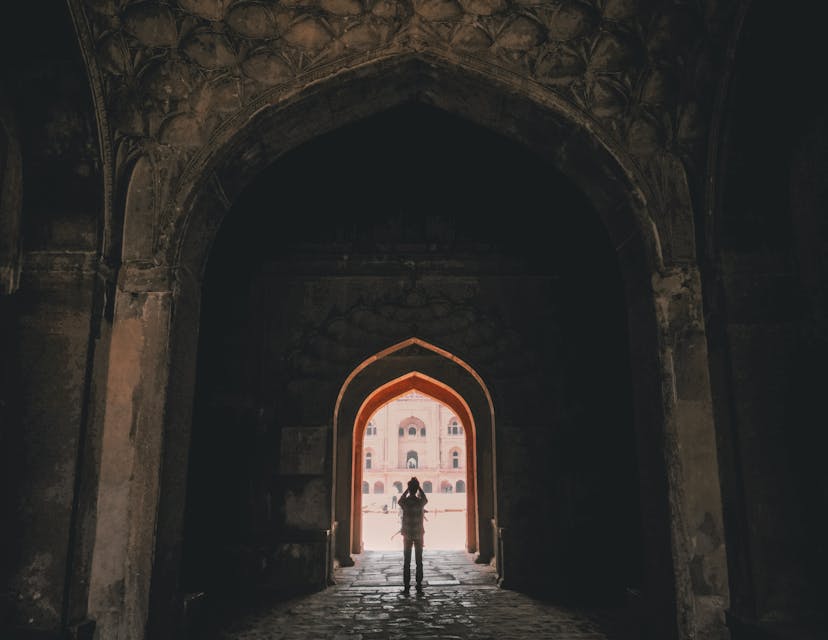Discovering the Stories Behind Delhi’s Historic Gates

Delhi, the heart of India, is a city steeped in history and culture. One of the most fascinating aspects of Delhi’s heritage is its historic gates. These gates, also known as “darwazas” in Hindi, were once the entrances to the walled city of Delhi and played a significant role in the city’s defense and administration. Today, they stand as silent witnesses to the city’s glorious past and offer a glimpse into the stories of Delhi’s bygone era.
1. Ajmeri Gate
Located near the New Delhi Railway Station, Ajmeri Gate is one of the most prominent gates of Delhi. Built in 1644, it was named after the city of Ajmer in Rajasthan. This gate served as the southern entrance to the walled city and was an important trade route connecting Delhi with Ajmer. Today, it stands as a reminder of Delhi’s historical significance as a hub of trade and commerce.

2. Lahori Gate
Lahori Gate, located near the famous Red Fort, is another iconic gate of Delhi. Built in 1638, it was named after the city of Lahore in present-day Pakistan. This gate served as the main entrance to the Red Fort and witnessed many historical events, including the Indian Rebellion of 1857. Today, it stands as a symbol of Delhi’s rich history and architectural grandeur.

3. Kashmiri Gate
Kashmiri Gate, located near the Kashmiri Gate Metro Station, is one of the oldest gates of Delhi. Built in 1835, it was named after the city of Kashmir. This gate served as the northern entrance to the walled city and witnessed several battles and sieges during the British Raj. Today, it stands as a testament to Delhi’s tumultuous past and the struggles for independence.

4. Delhi Gate
Delhi Gate, located near the Feroz Shah Kotla Cricket Stadium, is another significant gate of Delhi. Built in the 17th century, it served as the southern entrance to the walled city. This gate witnessed the grand processions of Mughal emperors and was an important landmark during their reign. Today, it stands as a reminder of Delhi’s glorious Mughal past.

5. Turkman Gate
Turkman Gate, located near the Delhi Gate Metro Station, is a historic gate associated with the tragic events of the Indian Rebellion of 1857. It was named after a Sufi saint, Hazrat Shah Turkman Bayabani. This gate witnessed the brutal suppression of the rebellion by the British forces and stands as a memorial to the sacrifices made during that time.

6. Mori Gate
Mori Gate, located near the ISBT Kashmiri Gate, is a gate associated with the historic Mori Basti cemetery. It was named after a British officer, Major Charles Reid. This gate witnessed the funeral processions of many prominent personalities and stands as a reminder of Delhi’s multicultural past.

7. Dilli Gate
Dilli Gate, located near the Daryaganj area, is a gate associated with the historic Dilli Darwaza. It was named after the city of Dilli, which was the original name of Delhi. This gate witnessed the grand processions of Mughal emperors and stands as a testament to Delhi’s rich Mughal heritage.

8. Kabuli Gate
Kabuli Gate, located near the Yamuna River, is a gate associated with the historic Kabuli Darwaza. It was named after the city of Kabul in Afghanistan. This gate witnessed the arrival of traders and merchants from Kabul and Central Asia and stands as a reminder of Delhi’s historical connections with the Silk Road.

9. Nigambodh Gate
Nigambodh Gate, located near the Nigambodh Ghat on the banks of the Yamuna River, is a gate associated with the historic Nigambodh Ghat cremation ground. It is named after the Nigambodh tree, which is considered sacred in Hindu mythology. This gate witnessed the funeral processions of many prominent personalities and stands as a reminder of Delhi’s spiritual heritage.

10. Ajmer Gate
Ajmer Gate, located near the Ajmeri Gate Metro Station, is a gate associated with the historic Ajmeri Darwaza. It was named after the city of Ajmer in Rajasthan. This gate witnessed the grand processions of Mughal emperors and stands as a testament to Delhi’s vibrant cultural heritage.

Delhi’s historic gates are not just architectural marvels; they are windows to the city’s past. Each gate has its own unique story to tell, reflecting the diverse influences and rich history of Delhi. Exploring these gates is like stepping back in time and unraveling the mysteries of a bygone era. So, the next time you visit Delhi, don’t forget to discover the stories behind these magnificent gates.
🏰✨🚪🌆🇮🇳
